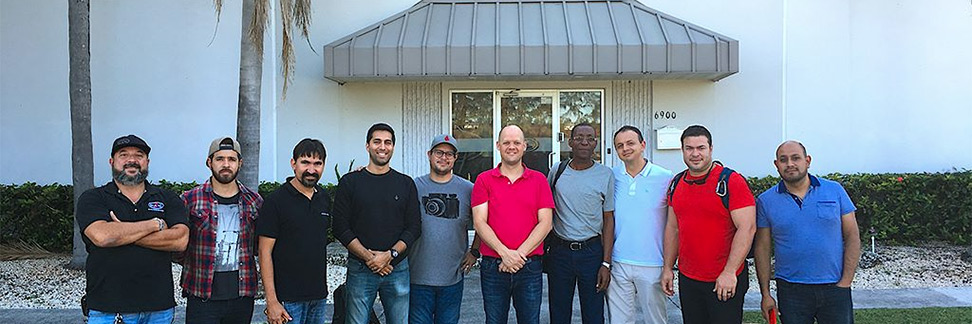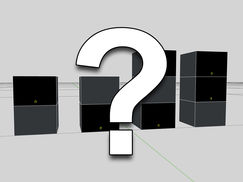 Which subwoofer to reverse in a vertical ground-stacked (half space) cardioid setup remains eluding. We all know that the physical displacement of the speakers with respect to the floor determines whether we remain coupled and therefore efficient.
Which subwoofer to reverse in a vertical ground-stacked (half space) cardioid setup remains eluding. We all know that the physical displacement of the speakers with respect to the floor determines whether we remain coupled and therefore efficient.
In part 1 of this series of articles, we'll focus exclusively on what happens in front of these setups without the additional processing mandatory for the actual cardioid effect.
By the end of this article it will appear that we have found the definitive answer, but in part 2 we'll discover there's a trade-off.
A quick glance at the phase wheel in my logo at the top of this page, shows that beyond a phase offset of 120° we start to uncouple.
The challenge becomes to stack our subwoofers in such a way that they're never separated by more than 1/3 wavelength (120°) for the highest frequency of interest. While trying to do so, we have to take into account the effect of the floor (half space).
Provided the floor is rigid enough and large enough to reflect / contain the wavelengths of interest, we can regard the floor as a mirror. The mirror images of our real subwoofers are located where you would expect them to see. Think of these mirror images as "virtual" subwoofers.
Depending on the point of observation, all these sources should arrive within 1/3 wavelength or less for the highest frequency of interest. Boundary and edge effects by neighboring enclosures set aside, it becomes an exercise in triangulation.
The following examples only investigate physical displacement. Additional processing is beyond the scope of this article.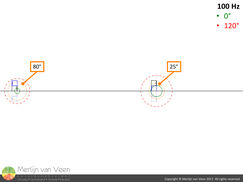 figure 1Figure 1 shows a 2-high cardioid stack. On the left-hand side the top sub is reversed. On the right-hand side the bottom sub is reversed. We start out at the base of the left-hand stack.
figure 1Figure 1 shows a 2-high cardioid stack. On the left-hand side the top sub is reversed. On the right-hand side the bottom sub is reversed. We start out at the base of the left-hand stack.
From this origin we draw a circle (green) until we encounter a transducer (center grill bottom speaker) from here on referred to as acoustic center. Let's label the radius of this circle 0°.
Next, we draw a second circle from the same point of view (POV) with a radius extended by 1,15 m or 3.8 ft (1/3 wavelength at 100 Hz) and label this 120° (1/3 wavelength). It's readily apparent that all acoustic centers (including the imaginary ones) reside in the area between both circles.
In other words, from the POV at the base of the stack, all subwoofers arrive within 120° of phase offset or less. In fact, if we draw an intermediate circle with the same origin, that intersects with the acoustic center of the rear-facing subwoofer. We can see that all subs actually arrive within 80° or less from 100 Hz and below. In the median plane (floor), they remain coupled all the way up to the grill.
Establishing this for the highest frequency of interest suffices. As frequency goes down, wavelength goes up and the margins for tolerating displacement increase.
Contrary, on the right-hand side in figure 1, maintaining our POV, the first acoustic center we encounter is the rear-facing subwoofer. The front-facing subwoofer however, arrives well within 120° of phase offset. In fact, the intermediate circle shows it arrives within 25° or less from 100 Hz and below. As far as the median plane is considered, reversing the bottom subwoofer provides the best coupling. Let's repeat the experiment at ear height.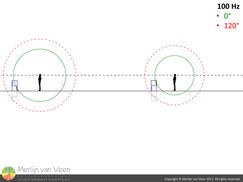 figure 2Figure 2 shows the same setup but this time our POV resides in the listening plane. How close we can approach the stack, before becoming uncoupled, is effectively a measure of how well behaved the setup is. After all, if our subwoofers could somehow magically occupy the same point in space, there would be no more physical displacement and the POV would be irrelevant.
figure 2Figure 2 shows the same setup but this time our POV resides in the listening plane. How close we can approach the stack, before becoming uncoupled, is effectively a measure of how well behaved the setup is. After all, if our subwoofers could somehow magically occupy the same point in space, there would be no more physical displacement and the POV would be irrelevant.
If we come any closer in the left-hand example, we loose the bottom sub of the mirror images. Again, the right-hand example, where the bottom sub is reversed, remains better coupled. So what about a 3-high stack?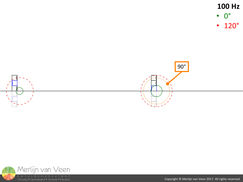 figure 3Figure 3 shows the median plane situation first. When the middle sub is reversed (left-hand side) we can not make it all the way to the base of the stack without loosing the top sub (>120°).
figure 3Figure 3 shows the median plane situation first. When the middle sub is reversed (left-hand side) we can not make it all the way to the base of the stack without loosing the top sub (>120°).
Contrary, when the bottom sub is reversed (right-hand side), even at the base of the stack all subs arrive within 120° of phase offset or less.
In fact, the intermediate circle shows they arrive within 90° or less from 100 Hz and below. As far as the median plane is considered, reversing the bottom subwoofer provides again the best coupling. Let's repeat the experiment at ear height.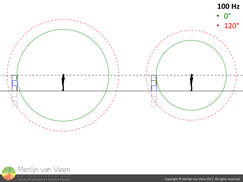 figure 4
figure 4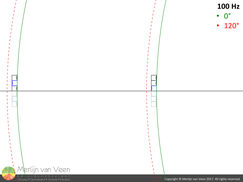 figure 5Also with a 3-high stack, figure 4 shows that reversing the bottom sub (right-hand side) provides better coupling. Becoming uncoupled is all about rate of change which is worst in the near field.
figure 5Also with a 3-high stack, figure 4 shows that reversing the bottom sub (right-hand side) provides better coupling. Becoming uncoupled is all about rate of change which is worst in the near field.
In fact laterally (perpendicular to the floor) along the central axis of the stacks, the physical displacement introduces the biggest phase offsets. So what about the far field?
Figure 5 clearly shows that at greater distances e.g. 50 m or 150 ft, the sequence of which sub is reversed is negligible.
Like I mentioned at the beginning of this article, in part 2 we'll discover there's a trade-off for this approach. So please curb your enthusiasm for now...
DISCLAIMER: This article relates to vertical stacked setups in half space only and not flown or horizontally spaced setups!
